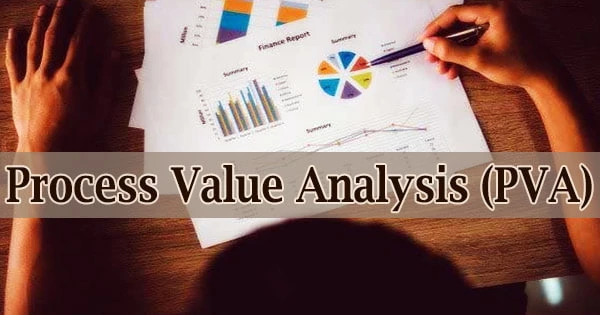The study of a company’s processes or procedures to see whether they deliver adequate value to customers is known as process value analysis (PVA). It is the analysis of an internal process by a company to see if it can be made more efficient. The goal is to increase the efficiency of company activities in terms of value delivery and cost.
PVA’s purpose is to reduce the number of redundant processes and costs in the value chain required to deliver a good or service while maintaining customer satisfaction. If an activity does not provide value to the process, the analysis team looks for ways to eliminate it. A detailed process value analysis can help a company cut expenses while also decreasing the process’s time.
PVA forces managers to examine all aspects of their business objectively. Managers who utilize ABM find it to be a cost-effective technique of minimizing non-value-adding tasks. Business managers can also use PVA to identify and relate all business activities to the value chain.
Each stage in a process is related to the value that customers gain from it or the outcome that the process achieves. As a result, a product or service can be provided to a consumer faster and at a reduced cost.
Customers benefit from lower turnaround times for their purchases when the length of a process is shortened, which boosts customer satisfaction. In other words, the goal is to keep the present quality of customer care while cutting costs.
A disadvantage of performing a PVA is the possibility that the company will eliminate a process or change a step that will have unanticipated repercussions, like as delaying goods delivery or harming the company’s connection with its consumers.
Processes can be subjected to this type of analysis on a regular basis, with the most up-to-date technology and equipment being applied to the most recent iteration of a process. Managers will undertake PVA to see if any new technologies may be deployed financially, if any errors are being made that could be prevented, if there are any needless steps in the process, and so on.
Companies can cut expenses and allocate resources to value-adding activities by utilizing PVA to identify nonvalue-adding activities. Any steps in the process that are determined to be ineffective in terms of providing economic value may be altered or eliminated. As new technology emerge that could make a process more efficient, it may be studied again.
The notion of process value analysis (PVA) can also be used to acquired enterprises, where the acquirer can budget for probable cost savings based on a broad set of process value assessments. PVAs can be used by management to analyze and evaluate processes in a variety of business sectors within the organization.
For example, a corporation could evaluate incoming logistics, operations, outbound logistics, marketing, sales, and customer service processes and operations.
This study may appear to be an excellent way to enhance a variety of areas of an organization at first glance, but there is a risk that essential control points will be eliminated in the search of cost savings. One drawback of PVA is that it may eliminate some crucial steps in a process.
Control points are sometimes included in processes to ensure that rules are observed. These principles could be used to implement cost controls, ensure appropriate accounting procedures, and other internal controls. Eliminating a critical control point may have unforeseen repercussions for the business.
If a PVA focuses too much on cost-cutting, for example, the company risks eliminating or changing a procedure that keeps the business functioning efficiently. A corporation can elect to outsource its customer service department to a third-party vendor, only to discover that the subcontractor lacks the necessary staff or knowledge to offer good customer care.
A corporation may hire a controls analyst to help oversee the PVA and work with internal accounting personnel and management to avoid issues like this. When a company makes an acquisition, it may occasionally undertake a PVA.
A PVA can disclose whether the acquired company has less efficient processes than the acquiring company, or vice versa. A PVA can also assist management in maximizing the synergy or possible financial benefit that a merger or acquisition might provide.
















